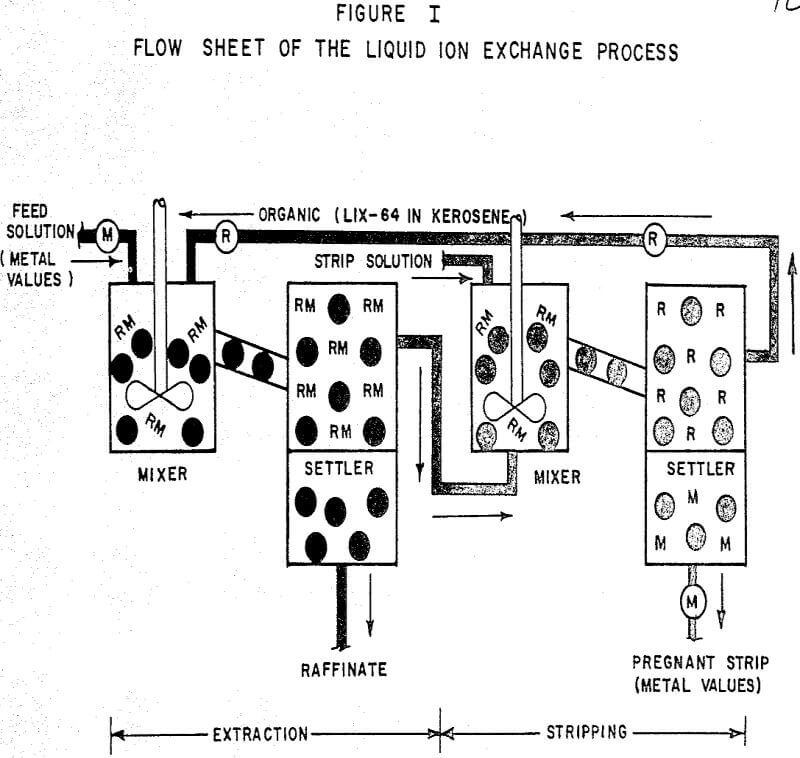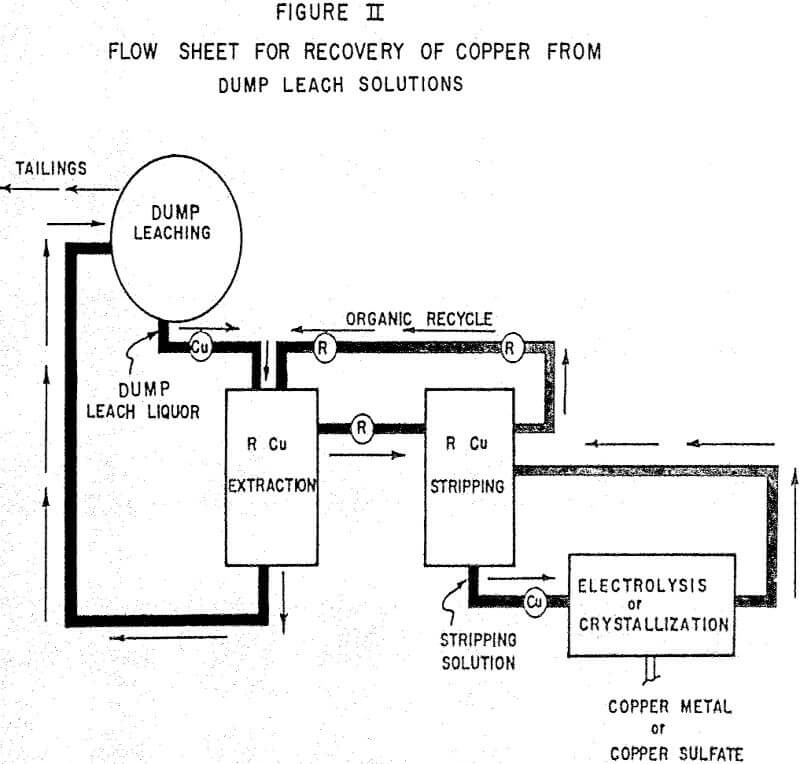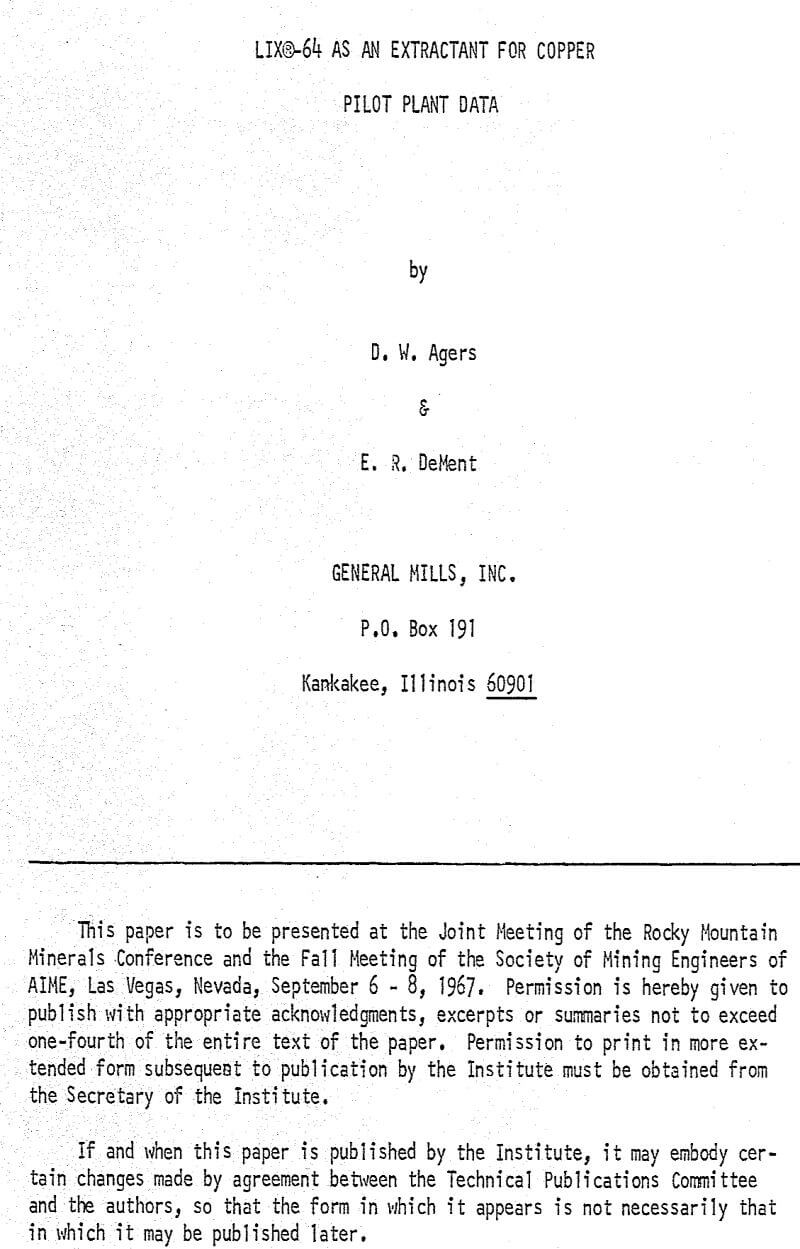Table of Contents
Design parameters for scale-up to commercial plants are presented and discussed along with a revised capital cost estimate. The future pilot program is discussed, including minor design changes and the effect of entrained organic on dump leaching efficiency.
Description of The Liquid Ion Exchange Process
In the extraction section, a water-immiscible organic solvent (normally kerosene) containing an organic extractant is contacted with an aqueous solution containing the metal to be extracted. The two phases are then allowed to separate. Interstage pumping of both organic and aqueous is accomplished by employing the mixer impeller as a pump. A variable number of mixer-settler stages and flowrates may be used to achieve the desired recovery and concentration of the metal from the feed solution. After removal of the metal values, the aqueous solution leaving the extraction section is referred to as the raffinate.
The organic phase containing the metal values (referred to as the loaded organic) is then transferred to the stripping section, where the metal values are transferred from the organic phase to an aqueous solution for subsequent treatment, and the stripped organic recycled to the extraction section.
Chemistry of LIX-64
While the exact chemical structure of LIX-64 cannot be disclosed at this time, the reagent can be considered as operating on a hydrogen ion cycle:

Summary of Pilot Plant Operating Data
Following the laboratory program with LIX-64 described previously, an extensive pilot plant program was initiated to further define the technology and commercial potential of the reagent and process. Particular emphases were to be placed on the following aspects of the program:
- Verification of metallurgical results.
- Accurate solvent loss cost determinations, including stability of the reagent.
- Correlation of design and scale-up parameters.
- Long-term effect of organic recycle on dump leaching.
- Evaluation of materials of construction for commercial plants.
- Further define capital cost estimates for commercial plants.
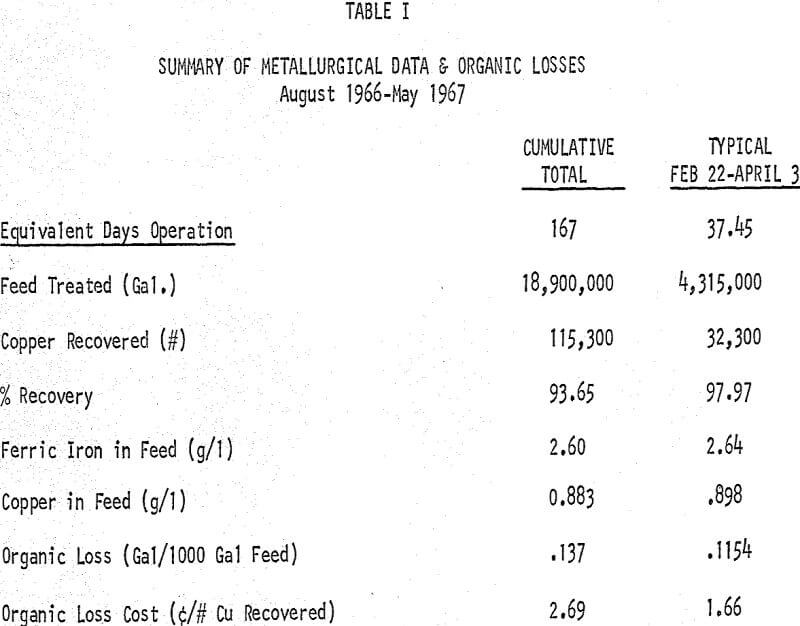
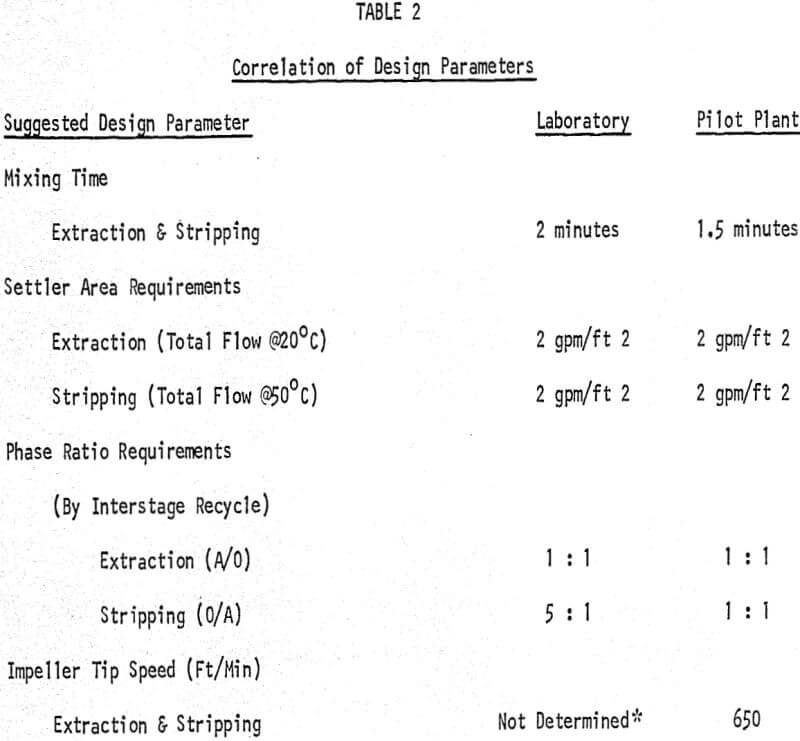
During the operation of the pilot plant at Bagdad, raffinate from the circuit was recirculated back to the leach dumps. Theoretically, 2/3 of the total leach liquor in the Bagdad dumps has been treated in the pilot plant, without any apparent effect on the leaching efficiency in the dump* It should be noted, however, that the acid consuming Bagdad dumps are principally oxide mineralization, thus do not rely to a large extent on bacterial action for solubilization of the copper. Also, only about 1/40 of the total flow from the dump is treated at the pilot plant, which would allow substantial dilution of any entrained organic in the recycled leach liquor. A program is underway at another plant which should provide valuable information on this question.
The Bagdad pilot plant was designed with four extraction stages, a scrub stage for iron removal on the loaded organic, and three stripping stages. The mixer impeller was designed also for interstage pumping of both aqueous and organic. The general configuration was cubical mixers, overflowing into rectangular settlers with the length approximately four times the width, and an effective depth of four feet. The extraction section was designed to operate with a two-inch dispersion band at a feed flowrate of 80 gal/min.
It was found necessary to operate the first extraction stage (where the loaded organic leaves the extraction circuit) and the last strip stage (where the stripped organic leaves the strip circuit for recycle) aqueous continuous to reduce aqueous entrainment to an acceptable level (less than 0.1%). Aqueous continuous means that entering the mixer, the organic is dispersed in the aqueous phase. A simple method to determine which phase is continuous is to measure the conductivity in the mixer. Aqueous continuous dispersions are conductive, organic continuous dispersions are not.
